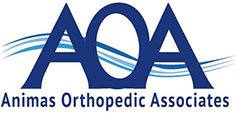SC Joint Injury Reconstruction
What is an SC Joint Injury?
The sternoclavicular (SC) joint is the joint between the breastbone (sternum) and the collar bone (clavicle). Injuries to this joint are called sternoclavicular joint injuries and can include stretching or tearing of the ligaments. It is usually caused due to severe trauma or a direct blow to the side of your body such as in motor vehicle accidents or contact sports.
What is Joint Reconstruction?
A surgical procedure employed to repair and restore full function of a damaged joint is known as joint reconstruction.
Anatomy
The SC joint is one of the 4 joints that complete the shoulder and is the only joint that links the arm to the body. Like any other joints, the SC joint is covered by articular cartilage that helps the bones slide effortlessly along each other during arm and shoulder movement. Tough connective tissue known as ligaments surrounds the SC joint providing stability and strength.
Symptoms of Sternoclavicular Joint Injury
Typically, symptoms of sternoclavicular joint disorders include:
- Tenderness, bruising or swelling over the joint
- Limited range of motion in the arm
- Grinding or crunching sound on arm movement
- Chills, fever, or night sweats along with redness over the joint due to infection
- Simultaneous radiation of pain to other joints due to inflammatory condition, such as rheumatoid arthritis
Diagnosis of Sternoclavicular Joint Injury
Review of your medical history, symptoms, and physical examination are sufficient to diagnose the condition. Physical examination would include checking for range of motion in your arm, looking for pain sensations, bruising, swelling, redness over the joint, and checking for a pulse at the elbow and wrist to ascertain good flow of blood to the fingers and hand.
Your doctor may also recommend imaging tests such as X-rays, MRI, and CT scans for detailed imaging of the soft tissue structures to differentiate a sprain from a fracture or dislocation and to confirm the diagnosis.
Surgical Reconstruction of Sternoclavicular Joint Injury
Surgical reconstruction is indicated when conservative treatment fails to alleviate symptoms or if you have an irreducible or recurrent posterior instability or chronic and symptomatic anterior instability.
The surgery is performed under general anesthesia. A transverse incision is made right below the medial end of the clavicle. A vertical incision is made in the capsule of the sternoclavicular joint and the status of the intra-articular disc is evaluated. The tendon of the sternal head of the sternocleidomastoid muscle is exposed and its quality and thickness are assessed before transfer. The tendon is separated from the muscle. A drill hole is made in the medial end of the clavicle. The hole is placed lateral to the attachment of the capsule. The tendon is passed through the capsule and then pulled through the drill-hole in the clavicle. The remaining tendon is passed through the capsule again before being returned to its site of insertion. The tendon is then pulled to reduce the joint and secured with sutures. The overlying tissues are closed in layers and the skin is closed with absorbable sutures.
Postoperative Care
Post procedure, your doctor will provide you with instructions that need to be followed diligently for a successful outcome and include:
- Wearing a figure-of-eight strap or sling for a period of 6 weeks
- Activity restrictions on heavy lifting for several months
- Maintaining range of motion of the wrist, elbow, and hand for light activity
- Proper surgical site care
- Physical therapy to strengthen muscles and restore movement
- Keep your scheduled follow-up appointment for 1 to 2 weeks post procedure
Risks and Complications of SC Joint Reconstruction
As with any surgery, some of the potential complications of SC joint reconstruction may include:
- Migration of hardware
- Recurrence of dislocation
- Infection
- Sternoclavicular arthritis
- Non-cosmetic results
Advantages of SC joint Reconstruction
Some of the advantages of SC joint reconstruction include:
- Provides a good anatomic reconstruction of the joint
- Reinforces the relationship between the sternum and clavicle and fully resolves any instability
- Minimal damage to proximal neurovascular structures
- Promotes tissue integration and maximizes healing potential










